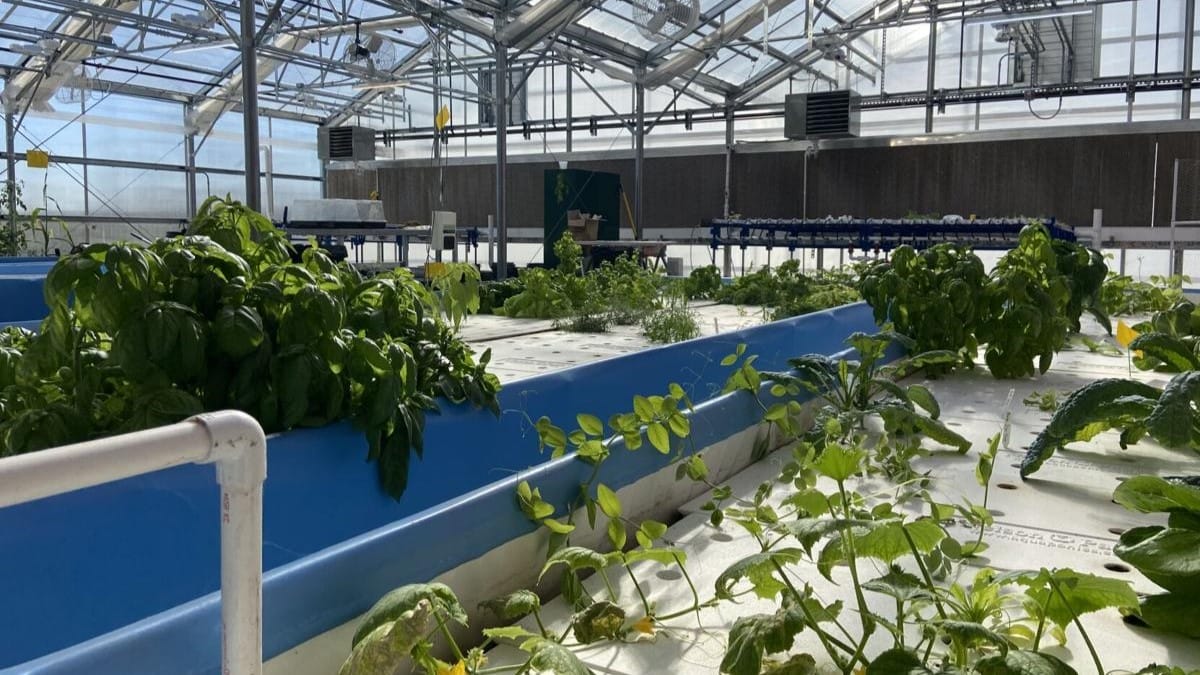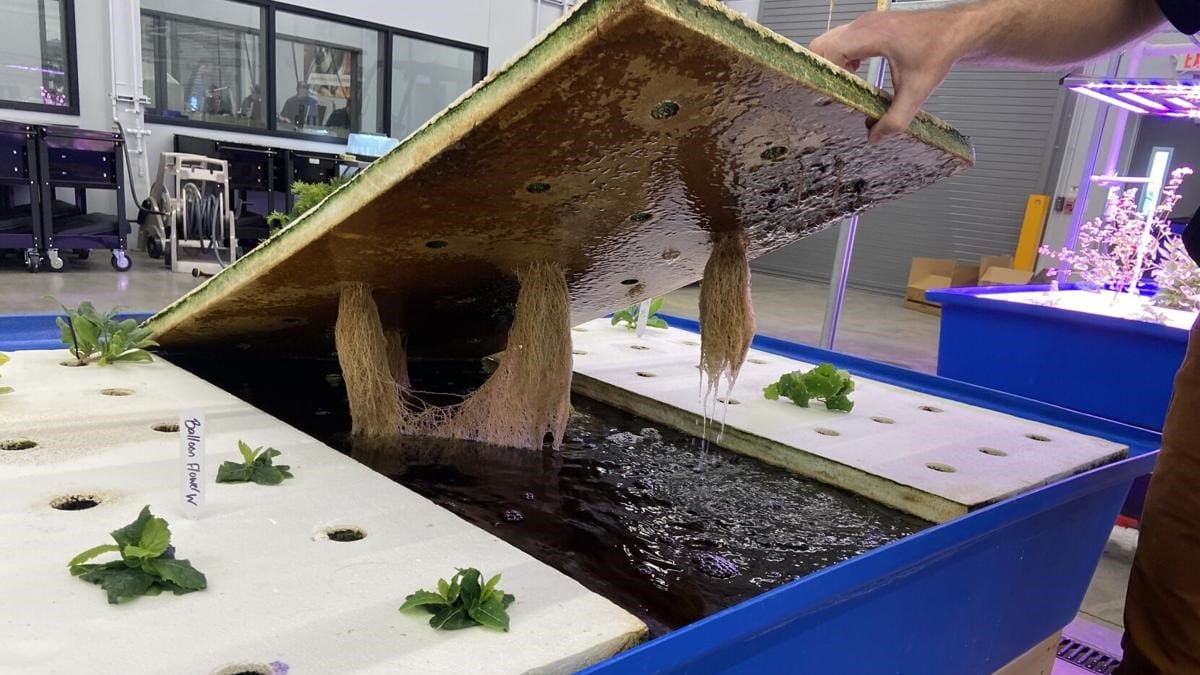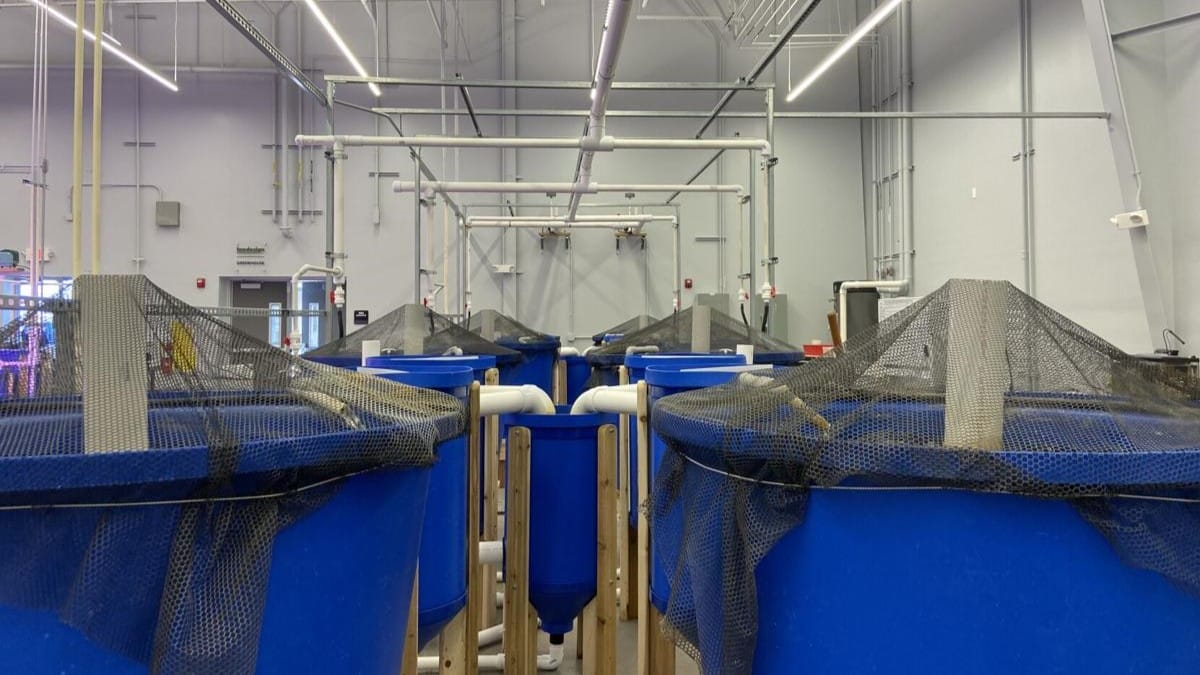Missouri Becoming Strategic Home for Indoor Farming Nearly Double-Digit Growth Expected Over the Next Decade
Published December 19th, 2023 at 6:00 AM
Above image credit:The sound of running water fills the lab as students navigate between large plastic tubs and styrofoam sheets holding green plants in one of the classrooms at Ranken Technical College’s campus in Troy, outside of St. Louis.
Tilapia at different life cycle stages fill the blue tubs. Their water is then filtered to draw out nitrogen that passes through tubes to the other half of the room, where it fertilizes the various plants growing under bright lights.
Ranken’s facility is providing its students a chance to work in one of several indoor farming formats, many of which are popping up around the country and in Missouri.

The U.S. is home to an estimated 2,000 indoor farms, and the industry is expected to grow at 9.8% annually between now and 2033.
Though many of these facilities have appeared in recent years, the industry remains relatively small due to how new it is, said Nick Crosse, who teaches Ranken’s aquaponics class.
“There aren’t a ton of employment opportunities specifically in this… it’s just not a huge industry at the moment,” Crosse said. “So we’re looking for ways to train them in other areas… so that when they leave here, they’re just kind of a multifaceted, multi-skilled technician.”
The classroom at Ranken uses aquaponics, a combination of aquaculture — growing fish indoors— and hydroponics —growing plants in water. It uses a closed system, where the only input the school purchases is food for the fish.
Other forms of indoor farming, also known as controlled environment agriculture, have also been appearing around the state, such as vertical farming startups.
The different forms of indoor farming are a response to the changing face of agriculture, where farmers face dry conditions, extreme weather and more pests. Farming indoors could offer a way to produce local food with less space and inputs, while also decreasing emissions from transporting products elsewhere.

St. Louis as a Leader
Last December, the World Wildlife Fund’s Markets Institute found that St. Louis is positioned to become a global leader in the indoor agriculture sector, according to an analysis from the group.
Because of the region’s influential players in the bioscience, plant science and agtech industries, as well as several universities and foundations, the WWF found that the area will be suitable to help grow this industry.
The WWF also helped form the new St. Louis Controlled Environment Agriculture Coalition with over 70 members.
The University of Missouri-St. Louis’ Yield Lab Institute, which invests in agrifood tech startups, will also develop a Center of Excellence in indoor farming. UMSL and Yield Lab have hired a contractor to conduct a feasibility study to identify a physical site for the center.
Alice Roach, a University of Missouri research associate, worked on a September study from MU, UMSL and other nearby institutions that examined Missouri’s indoor farming supply chains.
She said Missouri is home to many technology providers, especially in the St. Louis area, which has supported agricultural startups in the state. The state’s central location is also likely a major factor that allows goods to easily reach other regions, she added.
“Missouri is positioned well given its central location in the country, so that could be another factor that’s driving some interest in Midwest locations,” she said. “We have lots of highways here to get products, to get inputs, moved around.”
The study found that “increasing demand for high-quality food, independent agriculture technique, and growing urbanization are some of the critical factors responsible for market growth.”

Startup Challenges
Though industry seems to be ramping up in Missouri, an increasing number of startups in this area are struggling nationwide.
Multiple indoor farming startups that received substantial investments of hundreds of millions of dollars, including AppHarvest and AeroFarms, which had planned to open a facility in Missouri, have filed for bankruptcy in the past couple years. However, AeroFarms will get a second chance after emerging from its Chapter 11 bankruptcy fully funded.
Roach and Haitao Li, who worked on the same study, said it is no surprise that many indoor farming startups struggle in their first few years.
“Many startups in this new industry actually fail, especially when they try to grow,” Li said. This is because the businesses must then find increased funding and try to expand their supply chains.
A major challenge for many of these startups comes from high energy costs— from lights, to fans, to running water.
The system Ranken uses, for example, costs nearly $17,000 for the fish tanks and plant tubs combined, which doesn’t include costs to operate lighting and fans to replicate wind.
The study Roach and Li worked on examined several case studies, which found that a supply chain of St. Louis facilities, for example, would see costs totaling $391,742, and a $7,612 loss of profit.
“Energy costs can be very expensive for one of these facilities, so locating in an area that just naturally has higher rates for electricity may put you at a greater disadvantage in terms of being able to turn a profit,” Roach said.

Hope for the Future
Despite the challenges of starting an indoor farming business, the students in Crosse’s class at Ranken are hopeful about the future of this new industry.
Abbigail Gifford, one of Crosse’s students, plans to eventually use her aquaponics experience in a farm-to-table approach.
“I would love to open up this exact facility somewhere and make it like a commercial business, sell to restaurants, sell at local farmers markets,” she said.
Chris Ken, another student in the lab, is seeking a different avenue with his future indoor farming career. Ken’s parents grow cannabis indoors at their facility in central Illinois, where he discovered his passion for indoor farming, and he hopes to eventually start an operation of his own.
“I feel like in the future we’re gonna see not only this (operation at Ranken), but we’re gonna see it in a better scale on a bigger scale,” Ken said. “I feel like we are going to be definitely on the forefront of that just because we have the experience working with it, so we know what things need to be better.”
Teagan King is a University of Missouri journalism student and a reporting intern at Kansas City PBS and Missouri Business Alert, a member of the KC Media Collective.



